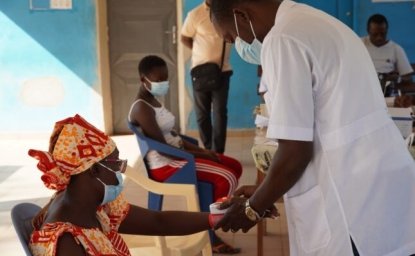Coronavirus Disease 2019 (COVID-19) was first identified in Wuhan City, Hubei Province, China in December 2019. The World Health Organization (WHO) declared the COVID-19 outbreak a pandemic on March 11, 2020. There are approximately 218,000 confirmed cases and 8,800 deaths worldwide.[1] As the COVID-19 pandemic prompts the cancellation of public gatherings around the world, Canada’s recent actions illustrate the rapid evolution of the country’s response to prevent the spread of the pathogen as well as minimize the disruption to the country’s economy. Despite Prime Minister Justin Trudeau being in voluntary self-isolation, following his wife Sophie Trudeau’s testing positive for COVID-19 after a trip to the United Kingdom. Canada’s cabinet members and public health officials along with provincial and indigenous leaders continue to assess current and devise future public policy measures to slow the infection rate (“flattening the curve”) to prevent the outbreak from overwhelming the healthcare systems in place. This is the primary goal of most countries in response to the crisis to minimize a spike in the number of people getting sick all at once. Protective measures that deliberately increase physical space between individuals (“social distancing”) to avoid spreading illness or practice self-quarantine in the event of exposure to the virus are vital to lessening COVID-19’s impact and save lives.
As of March 16, the Government of Canada has conducted 25,000 tests. Below are the number of reported cases in Canada:
- Confirmed Cases: 736*
- Probable Cases: 354*
- Deaths: 9*
*Government of Canada as of March 19 at 11:30am (ET).
Demographics, Symptoms, and Outcomes of a Sample of Canada’s COVID-19 Cases
The Government of Canada illness summary lists the demographics of 260 cases who contracted the virus between January 15 and March 15: [2]
- 52% of cases are male
- 31% of cases are 60 years old and over
- 11% of cases have been hospitalized
- 69% of cases are travelers and 13% are close contacts of travelers
Canada’s Stimulus Package Rollout and Post-Coronavirus (COVID-19) Economic Recovery
Prime Minister Justin Trudeau unveiled the COVID-19 Economic Response Plan, a C$82 billion dollar stimulus package that grants direct and immediate assistance to Canadians and businesses in an effort to minimize COVID-19’s disruption to the economy. The stimulus package, representing more than 3% of Canada’s GDP, allocates C$27 billion to support workers and businesses and C$55 billion in liquidity through tax deferrals. In addition, Canada has already committed C$1.1 billion dollars in aid to fight and mitigate the public health threat posed by coronavirus, allocating the majority of those funds to providing provincial and territorial support (C$500 million) as well investment in research (C$275 million).[3]
Research and Infrastructure Investment to Combat Pandemics
Canada’s response to Severe Acute Respiratory Syndrome (SARS) in 2003 pushed the country to invest in testing and monitoring infrastructure to prepare for a future influenza pandemic. Justin Ling of Foreign Policy outlines how Canada developed a decentralized, federal-provincial-territorial approach that expanded the country’s capacity to monitor potential cases, conduct tests, and validate results at the local level. Thus, Canada’s ability to identify cases early, and tracing the source of infection was key to minimizing the spread of Coronavirus (COVID-19) early on. Canada’s COVID-19 response working group who had been meeting since the end January to prepare for broader transmission of the virus became a cabinet committee on March 5. The committee’s role is to guide the country’s leadership, coordination, and preparedness efforts to limit the health, economic and social impacts of the virus.[4] Health Canada began holding daily news conferences at to provide Canadians with the latest information regarding the virus. In the event that Canada can no longer contain the spread of the virus, the federal government does have the jurisdiction to implement a lockdown under the Quarantine Act (2005). According to York University global health professor Steven Hoffman, the Quarantine Act grants the following authorities:
- The Minister of Health has the authority to declare any building in Canada, even a private home, a quarantine zone;
- Public health officials have the authority to question and examine anyone entering the country; and can even force people to accept medical treatment.
The U.S.-Canada Border & Travel Restrictions
Non-essential travel across the U.S.-Canada border is temporarily restricted. The agreement reached by Prime Minster Justin Trudeau and President Donald Trump on Wednesday does not apply to commerce and trade in an effort to avoid the disruption of food, fuel, and life-saving medicine supply chains.[5] The United States closed its borders to flights and vessels from China 47 days before Canada followed suit. The difficulty and the associated economic costs (the U.S. is Canada’s second largest trading partner) closing the world’s largest border explains why neither the United States nor Canada had done this until now.
Earlier this week, Trudeau announced the closure of Canada’s border to non-American foreign nationals beginning Wednesday, March 18 with the following exceptions: airline crews, diplomats, immediate family members of Canadians and, at the time, U.S. citizens.[6] In addition, the majority of international flights to Canada will be redirected to the following four airports: Calgary, Montreal, Vancouver. Domestic flights and flights originating from the United States, Mexico, the Caribbean and Saint Pierre et Miquelon were not affected at the time.[7] Any traveler entering Canada will be asked to self-isolate for 14 days upon entry. Such restrictions are not applicable to commerce and trade or to healthy workers who are “essential to the movement of goods and people.”[8]
The Suspension of Parliament
Parliament suspended session on March 13 and is provisionally scheduled to reconvene April 20, although it may reconvene sooner. Prior to the suspension, the House of Commons chose to expedite several key legislative proposals and cancelled all other business. Notably, Parliament approved the United States-Canada-Mexico Agreement (Bill C-4) and a plan to fund government operations if the budget process is delayed (Bill C-12) before leaving for a prolonged recess.
[1] Mapping the Spread of the Coronavirus in the U.S. and Worldwide, https://www.washingtonpost.com/graphics/2020/world/mapping-spread-new-coronavirus/ Accessed: 3/19/2020
[2] Coronavirus disease (COVID-19): Outbreak update, https://www.canada.ca/en/public-health/services/diseases/2019-novel-coronavirus-infection.html, Accessed 3/19/2020
[3] Government of Canada’s COVID-19 Fund Allocation: https://www.canada.ca/en/public-health/services/diseases/2019-novel-coronavirus-infection/canadas-reponse/government-canada-takes-action-covid-19.html Accessed: 3/18/2020
[4] Government of Canada takes action on COVID-19 https://www.canada.ca/en/public-health/services/diseases/2019-novel-coronavirus-infection/canadas-reponse/government-canada-takes-action-covid-19.html Accessed: 3/18/2020
[5] Canada-U.S. border to close except for essential supply chains https://www.theglobeandmail.com/canada/article-trump-confirms-canada-us-to-close-border-to-non-essential-travel/ Accessed: 3/18/2020
[6] Justin Trudeau's address to the nation on border restrictions: Full transcript https://www.macleans.ca/news/canada/justin-trudeaus-address-to-the-nation-on-border-restrictions-full-transcript/ Accessed 3/16/2020
[7] Ibid.
[8] News Release: Prime Minister announces new actions under Canada’s COVID-19 response, https://pm.gc.ca/en/news/news-releases/2020/03/16/prime-minister-announces-new-actions-under-canadas-covid-19-response Accessed: 3/16/2020
Author


Canada Institute
The mission of the Wilson Center's Canada Institute is to raise the level of knowledge of Canada in the United States, particularly within the Washington, DC policy community. Research projects, initiatives, podcasts, and publications cover contemporary Canada, US-Canadian relations, North American political economy, and Canada's global role as it intersects with US national interests. Read more

Explore More
Browse Insights & Analysis
Russia’s Security Approach to Public Health

WIPO is AWOL


